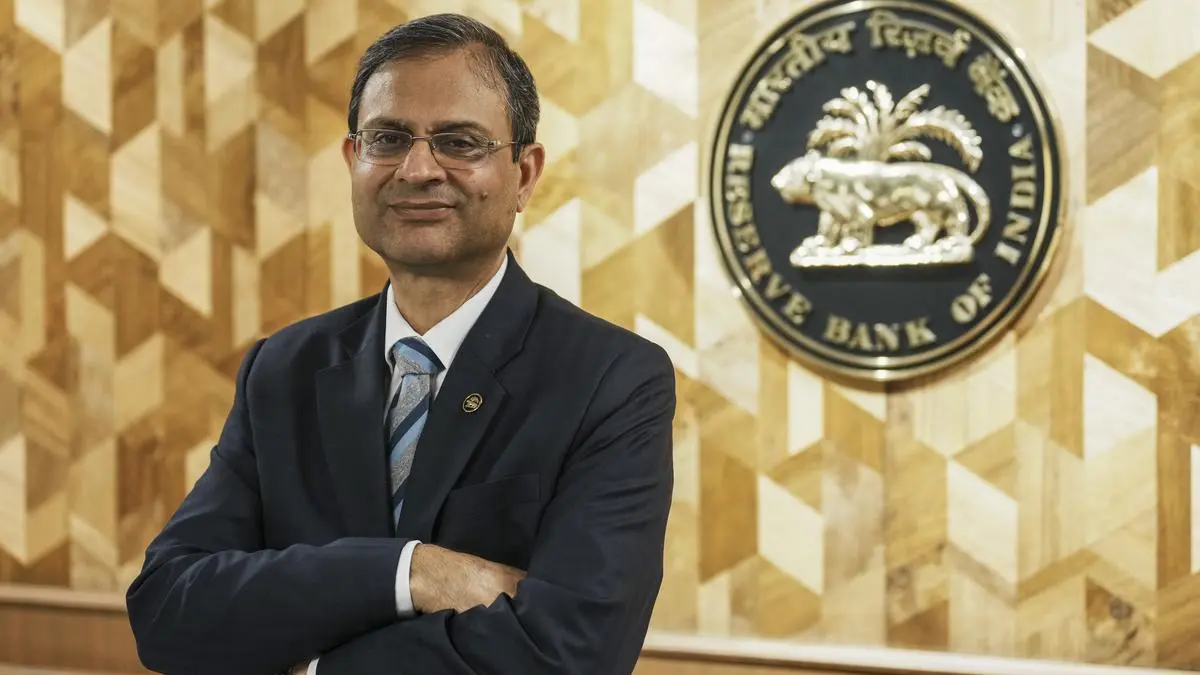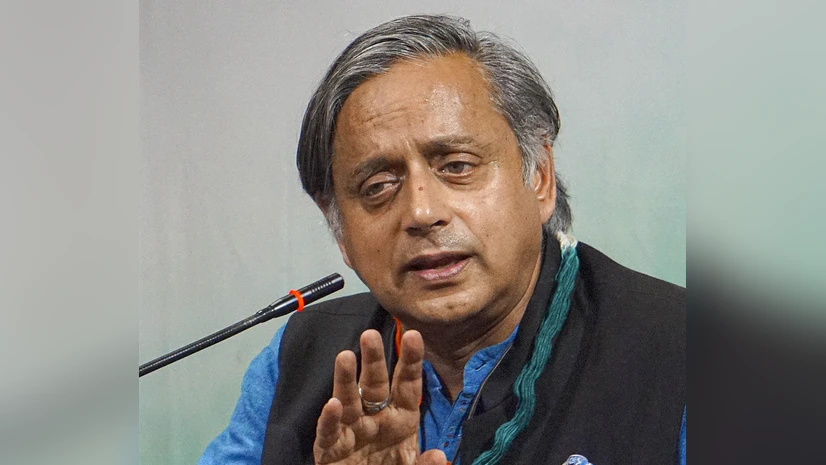Why in the News?
- The Reserve Bank of India (RBI) Monetary Policy Committee (MPC) on 1 October 2025 kept the repo rate unchanged at 5% and retained a ‘neutral’ policy stance.
- The decision followed earlier easing in 2025 (a cumulative 100 basis points cut) and came amid very low headline inflation forecasts for 2025–26 and concern about a bank-led credit slowdown.
- Rather than cutting rates immediately, the RBI emphasised structural and regulatory measures to support growth and credit flow across the economy.
Key Highlights
- MPC decision and macroeconomic context
- The MPC held the policy rate at 5.5% and maintained a neutral stance after assessing recent data.
- RBI projected headline retail inflation to average about 6% in 2025–26, well below the RBI’s medium-term target of 4%, thereby creating policy space for future support if needed.
- The Bank reiterated that it will keep stability—price and financial—first, while remaining ready to act to support growth.
- Shift from rate-driven to structural support
- The RBI stressed that “policy is more than rates” and signalled an expanded toolkit beyond the policy rate to stimulate activity.
- Officials highlighted roughly 22 measures (operational, regulatory, and supervisory) intended to improve credit supply, reduce transaction costs and unlock bank lending where warranted.
- Banking-sector liberalisation and new lending avenues
- Banks will be permitted to finance acquisitions by Indian corporates, widening capital market lending options.
- A decade-old system-level lending concentration framework (limits for exposures above ₹10,000 crore) has been withdrawn; going forward, concentration risk will be managed through specific macroprudential tools.
- Risk weights for infrastructure loans given to operational and high-quality projects by non-bank lenders will be reduced to lower financing costs.
- Other regulatory and market measures
- The RBI announced steps to consider fresh licences for urban co-operative banks (UCBs) and published a discussion paper as a first step.
- It allowed rupee-denominated loans to non-residents from Bhutan, Nepal and Sri Lanka for cross-border trade, facilitating regional trade in local currency and easing settlement frictions.
- Credit dynamics: slowdown and non-bank offset
- Bank credit growth slowed to about 10% (YoY) as of 22 August 2025, down from 6% a year earlier.
- RBI research showed that credit flows from non-bank entities rose and partly offset the moderation in bank credit, so overall financial resource flow remained resilient.
- The RBI’s measures aim to revive bank lending while preserving financial stability.
Key Terms
- Repo Rate
- The repo rate is the interest rate at which commercial banks borrow short-term funds from the central bank against government securities.
- It is a primary monetary policy instrument used to influence liquidity, credit cost and inflation.
- A lower repo rate typically reduces banks’ funding costs and can lead to cheaper loans for businesses and households.
- The transmission mechanism from repo to retail lending depends on bank balance sheets, competition, risk perception, and regulatory requirements.
- Central banks consider the repo rate alongside other tools when calibrating macroeconomic stability and growth.
- Monetary Policy Committee (MPC)
- The MPC is the decision-making body that sets the policy interest rate (repo) and the stance (neutral/accommodative/tight).
- It usually comprises six members: the RBI Governor (Chair), RBI Deputy Governor(s), and external members appointed by the government.
- Decisions are taken by majority vote, with the Governor having a casting vote in case of tie.
- Macroprudential Tools
- Macroprudential tools are regulatory measures aimed at systemic financial stability, addressing risks that emerge across the financial system.
- Examples include countercyclical capital buffers, sectoral capital requirements, loan-to-value (LTV) caps, concentration limits, and systemic risk buffers.
- These tools allow targeted intervention to limit excessive credit growth, asset bubbles, or risk concentration without affecting the entire economy via policy rates.
- Macroprudential policy is complementary to monetary policy.
- Non-Bank Financial Companies (NBFCs)
- NBFCs are financial intermediaries that provide credit, leasing, hire-purchase and other financial services but do not accept demand deposits like banks.
- They play a crucial role in credit intermediation, often serving sectors and borrowers underserved by banks.
- NBFCs can be systemic if large or interconnected; systemic NBFCs are subject to stricter regulation, including liquidity and capital requirements.
- Risks in NBFC sector include liquidity mismatches, market funding dependence and risk concentration, which can affect the wider financial system.
- Strengthening NBFC regulation includes improving supervision, disclosure, access to central bank liquidity and resolution frameworks.
Implications
- Monetary policy space – Low inflation gives room for future rate cuts, but RBI is cautious and focusing on structural support.
- Investment boost – Allowing bank-financed acquisitions and easing infra loan norms can spur corporate growth and private investment.
- Concentration risk – Removing lending caps may raise systemic risks; strong macroprudential safeguards are needed.
- NBFC role – Non-bank lenders are filling credit gaps; their growing importance calls for tighter oversight and stability measures.
- Regional trade & inclusion – Rupee loans to neighbours ease trade frictions, while new UCB licences could expand grassroots credit if governance is ensured.
Challenges and Way Forward
| Challenges | Way Forward |
| Slow bank credit growth and uneven transmission | Strengthen bank balance sheets, incentivise on-lending to productive sectors, and use targeted refinancing windows for priority sectors. |
| Concentration risk after withdrawal of system-level exposure limit | Deploy macroeconomic prudential tools (countercyclical capital buffer, sectoral concentration limits), and enhance large-exposure reporting and supervisory reviews. |
| Rising systemic role of NBFCs | Extend liquidity facilities, tighten risk governance, and formalise resolution frameworks to reduce contagion risk. |
| Infrastructure financing gap and project risks | Combine reduced risk weights with robust project appraisal, realistic risk sharing (viability gap funding), and strengthened lenders’ due diligence. |
| Financial inclusion and UCB governance | Grant UCB licences selectively, mandate strong governance, technology upgrades, and supervisory oversight to protect depositors. |
Conclusion
The RBI’s October 2025 policy balanced prudence and proactivity: it kept the repo rate steady while deploying a wide range of structural measures to revive credit and investment. By widening banks’ lending scope, supporting non-bank finance for infrastructure, and strengthening regional trade channels, the RBI is seeking a durable, stability-centric path to growth rather than short-term rate stimulus.
| EnsureIAS Mains Question
Q. Analyse the RBI’s October 2025 monetary policy stance. Discuss how non-rate measures can complement traditional monetary policy in reviving credit and sustaining economic growth while protecting financial stability. (250 Words) |
| EnsureIAS Prelims Question
Consider the following statements about the RBI’s October 2025 policy actions: 1. The Monetary Policy Committee retained the repo rate at 5.5% and kept the policy stance ‘neutral’. 2. The RBI withdrew a decade-old system-level lending concentration framework and will manage concentration risk through specific macroprudential tools. 3. The RBI cut the policy repo rate in the October 1, 2025 meeting to support immediate growth. Which of the above statements is/are correct? Answer: (a) 1 and 2 only Statement-wise explanations: Statement 1 is correct. The MPC on 1 October 2025 kept the repo rate unchanged at 5.5% and maintained a neutral stance, reflecting comfort with low headline inflation and the desire to retain optionality in policy. The posture signalled readiness to use non-rate instruments to support growth. Statement 2 is correct. RBI withdrew a long-standing framework that discouraged lending concentrations beyond ₹10,000 crore system-wide. The Bank said it would instead manage concentration risk using specific macroprudential tools, such as sectoral capital buffers, large-exposure norms, and enhanced supervisory reporting. Statement 3 is incorrect. The RBI did not cut the policy repo rate at the October meeting. While the Bank had cut rates earlier in 2025 (cumulative 100 bps), it chose not to reduce the policy rate on October 1, preferring structural measures to support credit and growth. |
|
Also Read |
|
| UPSC Foundation Course | UPSC Daily Current Affairs |
| UPSC Monthly Magazine | CSAT Foundation Course |
| Free MCQs for UPSC Prelims | UPSC Test Series |
| ENSURE IAS NOTES | Our Booklist |




